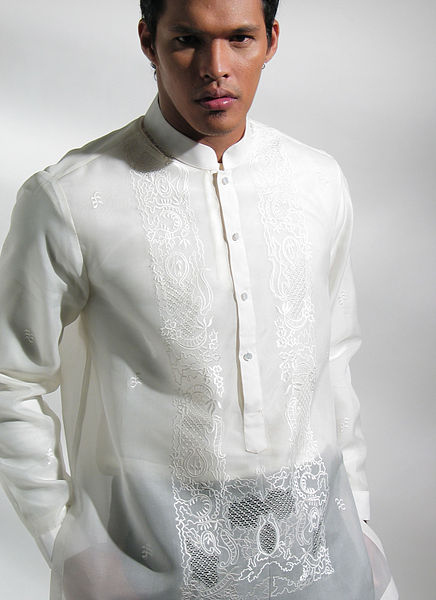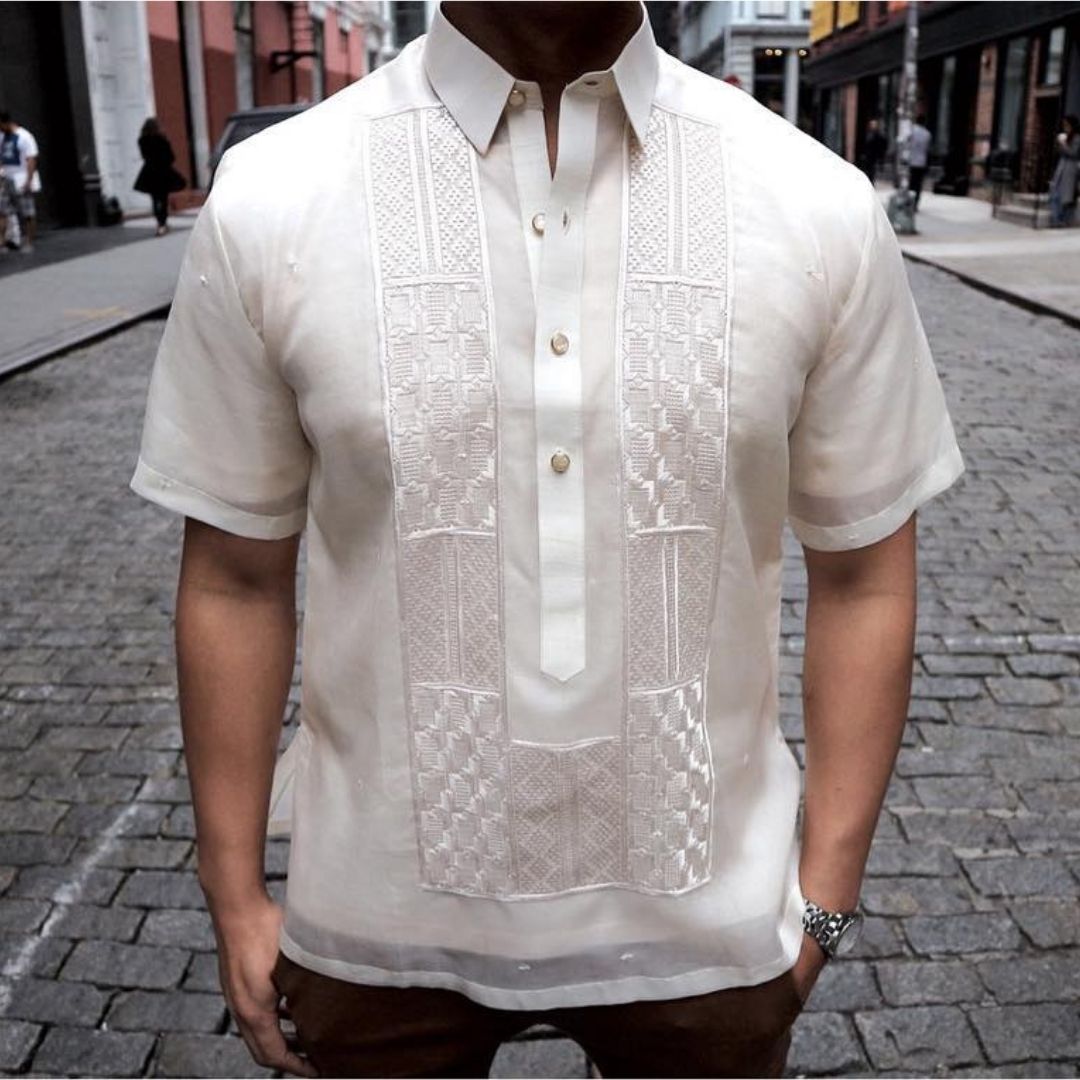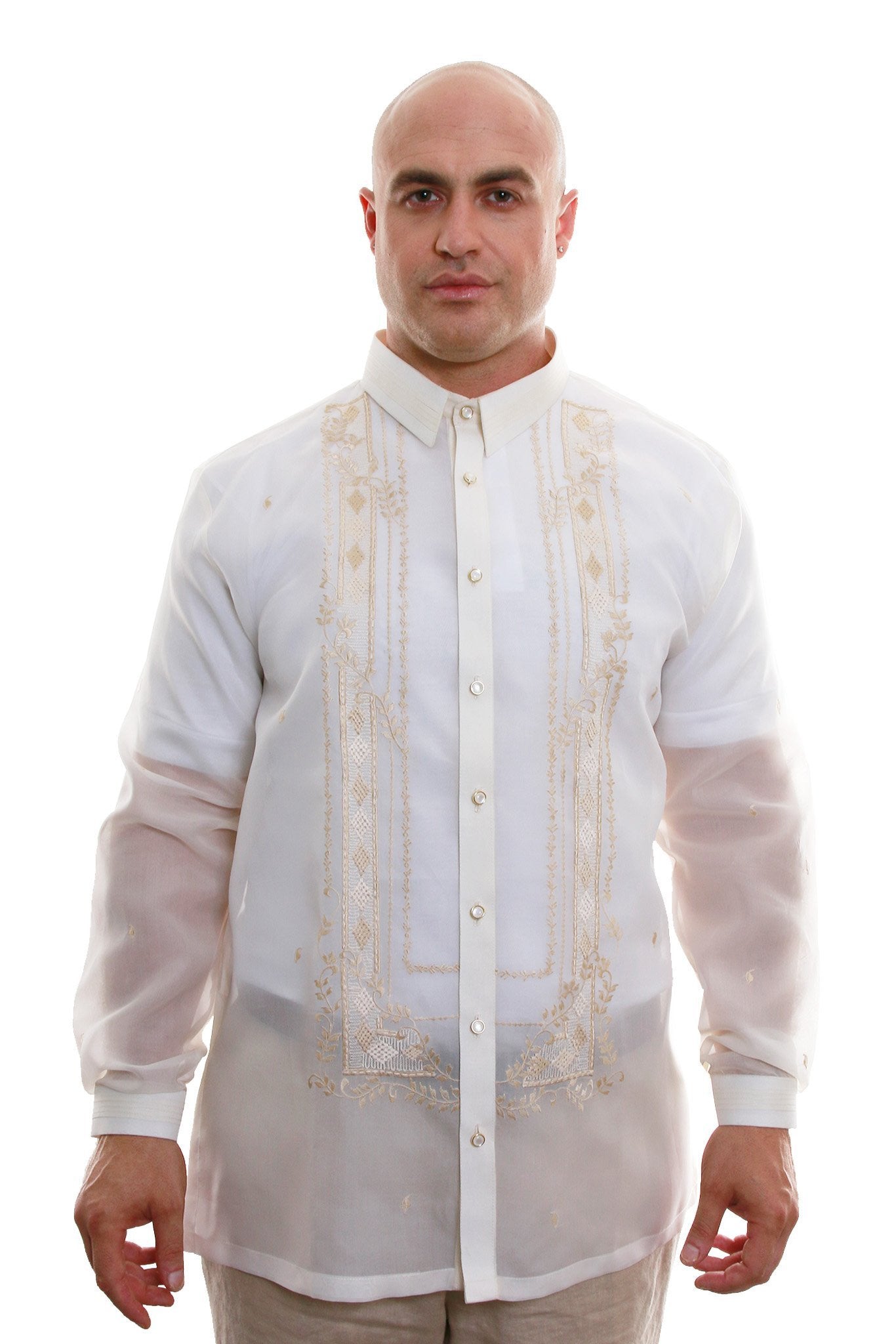A Biased View of Polo Barongs
Table of ContentsEverything about Barong TagalogThe Of Barong Tagalog For FemaleSome Known Factual Statements About Barong Tagalog

It is a common formal or semi-formal clothes in Filipino culture, and is put on untucked over an underwear with belted pants as well as dress footwear. Baro't saya is the womanly matching of barong tagalog, with the Maria Clara gown being the official variation of the latter. Barong tagalog was additionally referred to as ("outer shirt") in Philippine Spanish. modern barong tagalog. It has the enclitic suffix -ng which suggests that it is modified by or changes the next word. The root word of barong is the Tagalog word baro, implying "clothing" or "apparel". The term is usually not taken advantage of. Though "barong tagalog" actually translates to "Tagalog attire", the "tagalog" in the name does not mean that it was a type of outfit special to the Tagalog people, instead of various other Philippine ethnic teams.
Instead, the name was created to distinguish the gown as indigenous (hence "tagalog", i. e. ), as opposed to the designs of dress of Europeans and other international cultures.
Barong tagalog can vary significantly in terms of layout and also material utilized, however they share usual characteristics of having long sleeves, needlework, being buttoned (halfway or right down the upper body), and the lack of pockets. They are also put on freely as well as have slits on both sides. Historically, the product utilized for barong tagalog relied on the social course of the user and also the formality of the occasion.
Things about Where To Buy Barong Tagalog In Usa

The quality of the material and also the complexity of the embroidery were commonly signs of the standing and wealth of the wearer. The embroidery of the barong tagalog are frequently positioned on a rectangular section on the front of the upper body (referred to as pechera, "t shirt front", from Spanish pecho, "upper body"), and/or over the entire shirt (sabog, from Tagalog for "scattered"). More about the author.
History [edit] Pre-colonial period [edit] The barong tagalog stemmed from the Tagalog baro (actually "tee shirt" or "garments", also referred to as bar or bay in other Philippine languages), a basic collar-less shirt or coat with close-fitting long sleeves put on by both males and females in many ethnic teams in the pre-colonial Philippines. These were made from harsh linen-like fabric woven from indigenous abac fiber, or from imported fabrics woven from silk, cotton, and also kapok, among others. Among Tagalog males, they were commonly coupled with a rectangle of richly decorated towel recognized as the salaual or salawal worn knee-length and also formulated in the middle (like an Indian or Thai and also Cambodian ); while in females they were matched with a wraparound skirt called the.
, aside from similar baro (which view had shorter sleeves) as well as salaual combinations, males additionally used colorful robe-like and also coat-like variations that can prolong to well below the knees (known as the marlota as well as baquero in Spanish, respectively). These were sometimes belted at the midsection.

Not known Details About Barong Tagalog Dress
The couturier Jose "Pitoy" Moreno has assumed that this transitional design of t shirt was the camisa de chino of later centuries, which makes it a precursor to the barong tagalog. Depictions of participants of the top courses (including natives as well as) in the 18th century revealed that they usually put on European-style apparel. over here.
These were much longer than the modern barong tagalog, reaching to slightly above the knees. They were also typically candy striped with strong colors like blue, red, or environment-friendly. They currently presented characteristics of the modern-day barong tagalog, consisting of being made of sheer nipis material, needlework, long sleeves, as well as a loose silhouette with slits on both sides.
The sheer textile made use of by barong mahaba also required the wearing of an underwear, referred to as camisn or camiseta, which was likewise endured its own by citizens. By the 1840s, barong mahaba mostly befalled of style. In this duration, it progressed into the modern-day "timeless" barong tagalog, being much shorter with less extravagant folded collars, while still preserving the sheer material as well as various other baro characteristics.